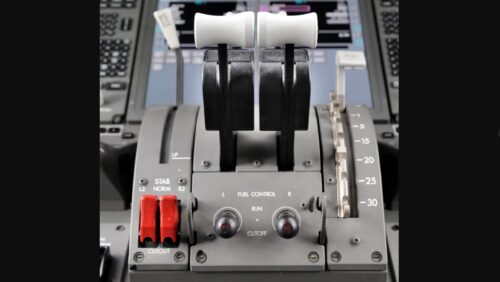
Twin-Engine Shutdown After Takeoff Led to Tragic Crash; FAA Warning Resurfaces
The Air India Dreamliner crash that killed over 270 people is under scrutiny after new details emerged. The Aircraft Accident Investigation Bureau (AAIB) confirmed that both engines shut down seconds after takeoff on June 12 when the fuel control switches flipped to ‘CUTOFF’.
This action cut off the fuel supply, leading to a total loss of thrust. The Boeing 787-8, bound for London Gatwick, crashed outside the Ahmedabad airport perimeter less than two minutes after departure.
What Are Fuel Control Switches and What Do They Do?
Fuel control switches are critical components located just below the throttle levers. On the Boeing 787, they must be pulled up before changing position—a design intended to prevent accidental activation.
These switches control the flow of fuel to each engine. In ‘RUN’ mode, fuel flows. In ‘CUTOFF’, it stops. Pilots use them to start or shut down engines on the ground or in emergency scenarios mid-air.
Fuel Cutoff Was Triggered, But No One Took Responsibility
Data shows that at 08:08:42 UTC, the aircraft reached a peak airspeed. Immediately after, both switches moved from RUN to CUTOFF within one second of each other.
Cockpit audio revealed one pilot saying, “Why did you cutoff?”, and the other replying, “I didn’t do so.” This raised serious questions about what exactly triggered the switch movement.
Backup Systems Kicked In, But Altitude Was Too Low
As engine speeds dropped, the Ram Air Turbine (RAT) deployed automatically. It provided emergency power. Restart attempts were made, with Engine 1 showing signs of recovery. But Engine 2 failed to stabilize.
A Mayday call was made at 08:09:05 UTC. The aircraft crashed six seconds later.
FAA Had Flagged Fuel Switch Locking Issue in 2018
This isn’t the first time fuel control switch concerns have been raised. On December 17, 2018, the U.S. Federal Aviation Administration (FAA) issued a Special Airworthiness Information Bulletin (SAIB). It warned about potential disengagement of the switch’s locking feature.
The locking feature is designed to prevent unintentional movement of the switch during flight. However, the FAA stated that this issue did not pose an immediate safety risk and thus did not warrant an Airworthiness Directive (AD) — which is a mandatory safety fix.
What This Means for the AI171 Crash?
The FAA bulletin did not require action from airlines but served as a caution. Now, with the AI171 crash possibly linked to inadvertent switch movement, questions are being asked about why this vulnerability wasn’t addressed more seriously.
Although the investigation is ongoing, the AAIB noted that this earlier FAA concern was known in aviation circles, but not seen as a direct flight risk.
Final Data Confirms Desperate Restart Efforts
Before the crash, both fuel switches were back in the ‘RUN’ position, indicating that the pilots attempted to restart the engines. Flight data showed rising exhaust temperatures, a sign that relight efforts were underway. But the aircraft was too low to recover.
With inputs from Reuters
